How to Stop TV Screen from Pixelating: Troubleshooting Guide
What To Know
- TV pixelation often results from weak signal reception, due to factors like poor internet, faulty cables, source media issues, and external interferences.
- To combat pixelation, reset the TV, check and secure all cable connections, and adjust the antenna for a stronger signal.
- Minimize pixelation by placing the antenna in a clear, high location, directed towards broadcast towers, avoiding metal objects and electronics. Use tools like Antenna Web or FCC for antenna direction guidance.
In this article, we’ll explore the various causes of TV pixelation and how to tackle them. Let’s go!
Quick Navigation
Why Does a TV Pixelate?
Television is the world’s most incredible optical illusion. When you watch a movie on your TV, you see a consistent picture moving seamlessly on your screen.
You think it is a moving picture, but it is actually a series of video frames consisting of tiny pixels lined up horizontally and vertically.
Video or film frames are the many still photos that make up the entirety of a moving picture. In comparison, pixels are a series of tiny, colored dots or squares that make up a digital image. They are small picture elements combined to complete any image on your screen.
![]()
TV pixelation refers to a television display glitch where a small number of pixels are stretched over the screen, resulting in a blurry image.
Incomplete signal reception by the TV often causes this glitch—your TV processes incomplete data on the screen.
Now that we have established the primary reason for TV pixelation, it is essential to highlight the other triggering factors.
1. Poor Internet Connection
A poor internet connection can cause pixelation. This occurs especially on streaming sites like Netflix and YouTube.
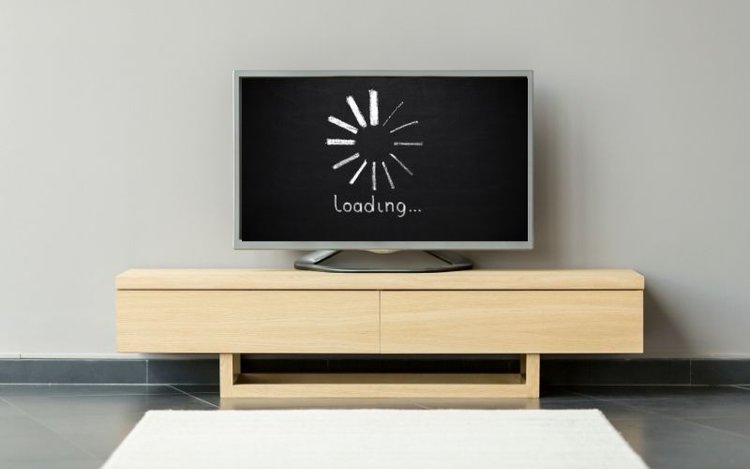
When the network is poor, the sites automatically reduce video resolution to continue streaming smoothly. The lower the picture resolution, the more pixelated it looks on a large screen.
For example, a 240p YouTube video displayed on a 50-inch TV screen will look very pixelated.
2. Poor Connection/Cables
Cable TV companies use coaxial cables to transmit signals from the source directly to the display device. These cables range from RG-6 to RG-59.
Your coax cables may develop issues for several reasons. They may be bent, pinched, or torn from stepping on and twisting them. The issue may also be from the coaxial port or splitter.
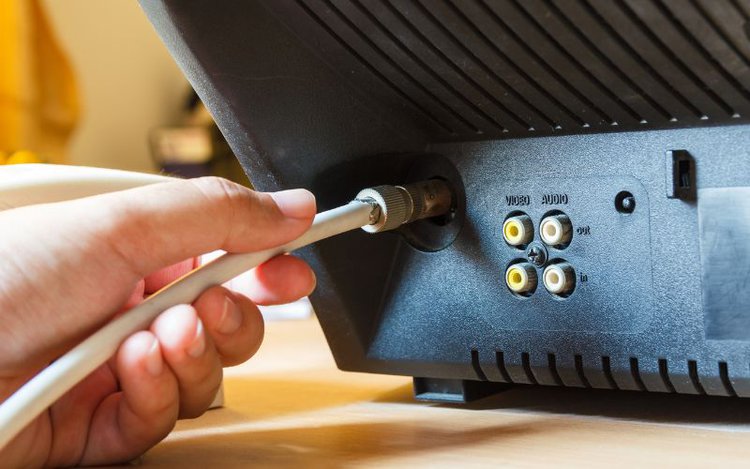
These issues can disrupt their ability to transmit signals efficiently, resulting in pixel distortion on your screen.
Pay attention to any video cable carrying signals from source devices to your TV. Your HDMI, USB, RCA, and composite cable can also cause pixelation if they are damaged or not connected properly.
3. Issues From The Source
Not all pixelation glitches result from faulty cable connections or outdated technology. Some pixelation issues are from the source media itself.
For example, video editors may use pixelation as an effect to blur out certain censored content. It may also be a recording issue during the filming stage.
4. External Interference
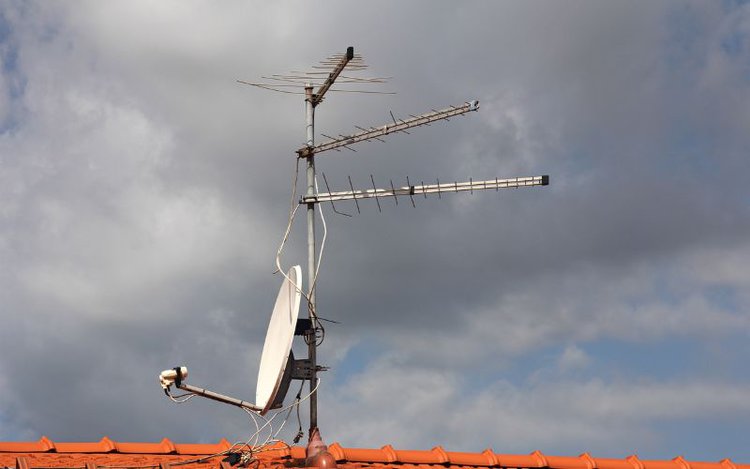
Pixelation is a sign of weak or incomplete signal reception. External interference, such as the weather, nearby appliances, and metallic objects, can block signal reception and cause pixel distortions on your TV screen.
Why Does My TV Pixelate at Night?
We have established that pixelation often occurs due to poor and incomplete signal reception. Hence, pixelation is especially common at night because signal reception usually fluctuates at night.
You’re probably wondering, “Why do TV signals deteriorate at night?”
Changes in the weather, atmospheric pressure, and temperature often occur at night. There is no solar radiation at night — as a result, the temperature cools rapidly.
Severe weather at night (i.e. rain and fog) can affect TV signals from broadcast towers. The moisture either reflects the signals or traps them, earthing them before they reach the TV antennas. The results are pixelated images or even white noise.
How To Stop The TV Pixelation
This section will explore several ways you can troubleshoot a pixelating TV.
1. Reset Your TV
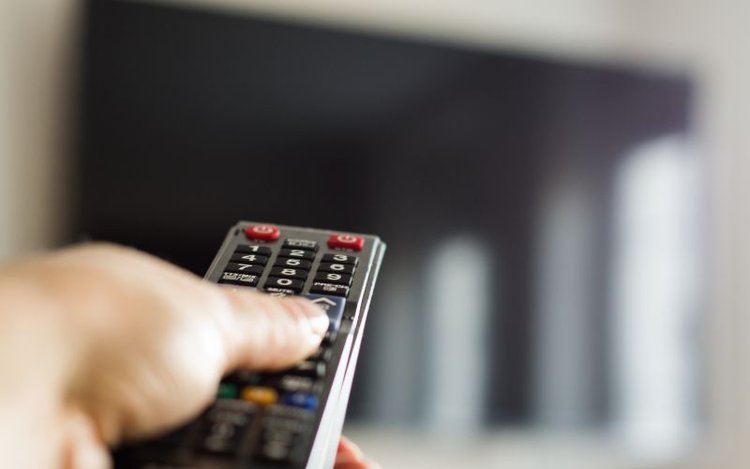
- Turn off the TV.
- Remove the power cord from the unit’s rear and the wall outlet or power bar.
- Wait 30 seconds before reconnecting the unit’s power cord to the power source.
- Allow up to two minutes for the TV box to restart.
- Turn on your TV box and do another test.
2. Refix Your Cable Connections
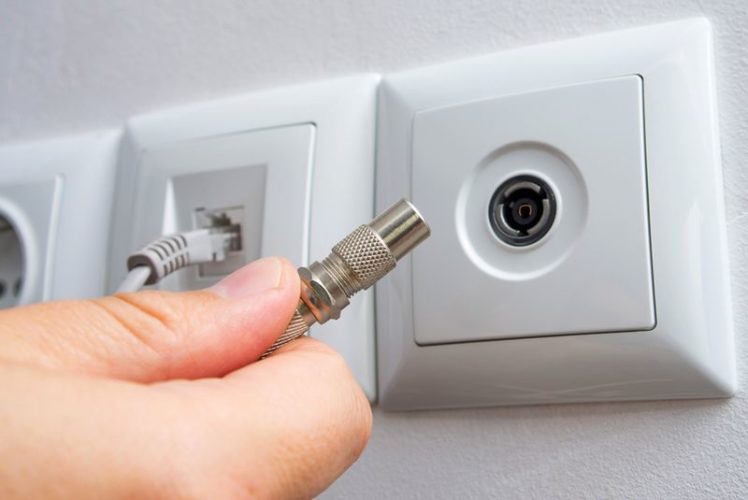
- Unplug the power cord from your TV.
- Remove the coaxial cable from the rear of the TV.
- Take the coaxial cable out of the cable wall outlet.
- Reconnect the coaxial cable to the TV and the cable wall outlet (or splitter), ensuring it is finger-tight.
- Reconnect your TV’s power cable.
NOTE: If you’re transmitting over HDMI, composite or other connectors, still follow the steps above to ensure the video cable fits tightly into the port. Troubleshoot cables to make sure they work properly.
3. Remove The Splitter
- Unplug your TV from the power outlet.
- One end of the coaxial wire should remain connected to the TV.
- Unscrew the coaxial cable end that is connected to the splitter.
- Set away the splitter.
- Connect the loose end of the coaxial cable to the cable wall outlet, making sure it is finger-tight.
- Plug your TV back into the power outlet and power it on.
- Check to see whether the quality of your images has improved.
4. Adjust Antenna
Set your TV antenna in a location where physical obstacles wouldn’t tamper with signal reception and transmission. If you can, mount it close to the ceiling or on the rooftop.
To ensure a free flow of signal transmission without interference, remove your antenna from locations with metallic objects or other electric appliances.
The wider part of your antenna is the back, while the smaller part is the front. Ensure that the smaller part faces the direction of the broadcast towers.
Are you wondering where the nearest broadcast towers are? Check out reception analysis sites like Antenna Web and FCC.
When you put in your address, they show you a list of available stations and a map showing the best direction to point your antenna.
Conclusion
Like some other television glitches, TV pixelation can result from poor or incomplete signal reception, amongst other things.
The tiny squares of pixel dots represent packs of data to be processed. Once there is a hindrance somewhere with the signal reception and data processing, the pixels would be incomplete and blown up to fill the screen, reducing the picture resolution.
You can prevent pixelation by resetting your TV, checking your cable connections, and remounting your TV antenna.
Gabriella ‘Diogo is a technical writer with a vested interest in tech hardware and equipment. She shares her knowledge and processes in an easy-to-grasp, lighthearted style. When she’s not testing or researching device performance, you’ll find her writing short stories or rewatching episodes of her favorite sitcoms.


Have done all the above but still not getting a picture. ?♀️?♀️ not to sure what to do.
How about making this subject in printer format?